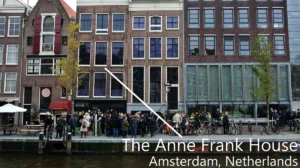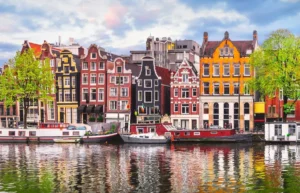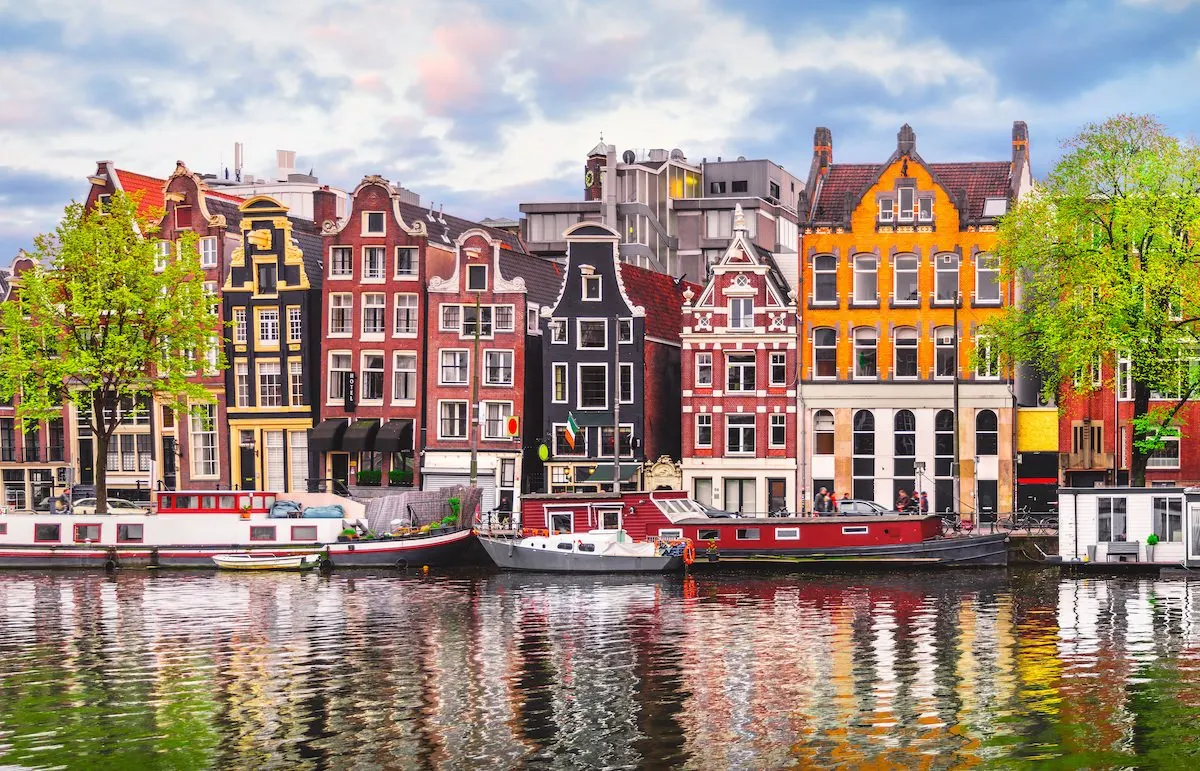Amsterdam, the capital city of the Netherlands, is a place where rich history intertwines with a progressive and diverse modern culture. Known as the “Venice of the North” due to its iconic canals, this enchanting city boasts a unique atmosphere that attracts millions of visitors each year. From its artistic heritage to its vibrant nightlife, Amsterdam offers a myriad of experiences that leave an indelible mark on every traveler.
- A Tapestry of Rich History: Amsterdam’s historical tapestry weaves together the stories of a city that has endured and prospered over centuries. Its origins date back to the 12th century, and remnants of its past can be seen in its well-preserved architecture, such as the iconic Anne Frank House and the grand Royal Palace. The city’s Golden Age, during the 17th century, saw Amsterdam become a thriving center of trade, finance, and art, leaving a legacy that is still felt today.
- Cultural Haven for Art Enthusiasts: Amsterdam has long been a muse for artists, with its renowned museums showcasing some of the world’s most celebrated works. The Rijksmuseum houses masterpieces by Dutch masters like Rembrandt and Vermeer, while the Van Gogh Museum showcases the evolution of Vincent van Gogh’s artistic genius. For contemporary art enthusiasts, the Stedelijk Museum offers an impressive collection. Beyond these renowned institutions, Amsterdam’s streets are adorned with vibrant street art, making the entire city a living canvas.
- The Allure of the Canals: Amsterdam’s picturesque canal system is an integral part of its identity and a UNESCO World Heritage site. Taking a leisurely boat tour or strolling along the canal-lined streets provides a unique perspective of the city’s beauty. The charming canal houses, many dating back to the 17th century, add a touch of elegance to the cityscape. The canal belt offers an ideal setting for outdoor cafés, boutique shops, and local markets, where visitors can immerse themselves in the laid-back ambiance of Amsterdam.
- Amsterdam is a city that effortlessly blends tradition and modernity, offering a captivating experience for all who venture there. Its rich history, vibrant art scene, scenic canals, and progressive culture make it a must-visit destination.
In Amsterdam, one can truly embrace the spirit of exploration and discover a city that embraces diversity, cherishes its heritage, and beckons visitors with its unique charm.

Anne Frank was a Jewish girl who gained worldwide fame posthumously through her diary, which she kept during the Nazi occupation of the Netherlands in World War II. Born on June 12, 1929, in Frankfurt, Germany, Anne and her family moved to Amsterdam in 1933 to escape the rising persecution of Jews under the Nazi regime.
During their time in Amsterdam, the Frank family lived in a concealed annex located behind a bookcase in Otto Frank’s office building. They, along with another Jewish family and a dentist, remained hidden for over two years until their discovery in August 1944. They were subsequently deported to concentration camps.
Anne’s diary, given to her as a birthday gift on her 13th birthday, became her refuge and a testament to her indomitable spirit. In her diary, which she named “Kitty,” Anne recorded her daily experiences, thoughts, dreams, and fears. She poured her heart into its pages, detailing the challenges of confinement, the dynamics of the hidden annex, and her aspirations for the future.
Tragically, Anne Frank died of typhus in the Bergen-Belsen concentration camp in early 1945, just weeks before the camp’s liberation. Her father, Otto Frank, was the only member of the family to survive. After the war, he returned to Amsterdam and discovered Anne’s diary, which he later published as “The Diary of a Young Girl.”
“The Diary of Anne Frank” has since been translated into over 70 languages and has become one of the most widely read and cherished books in the world. It offers a poignant and intimate glimpse into the life of a young girl whose spirit remained unbroken despite the horrors surrounding her.
Today, visitors can explore the Anne Frank House in Amsterdam, which has been converted into a museum. The museum allows visitors to walk through the secret annex, providing a powerful and emotional connection to Anne’s life and the atrocities faced by millions during the Holocaust. It serves as a testament to the importance of tolerance, understanding, and the preservation of human rights.
Anne Frank’s diary continues to inspire millions with its message of hope, resilience, and the power of the written word. Through her words, she has left a lasting legacy, reminding us of the importance of compassion, empathy, and the pursuit of a more just and inclusive world.

- Dutch Renaissance: Amsterdam’s architectural journey begins with the Dutch Renaissance, characterized by ornate facades, stepped gables, and intricate detailing. Examples of this style can be seen in buildings such as the Royal Palace on Dam Square and the Oude Kerk (Old Church), which is the city’s oldest building.
- Canal Houses: One of the most iconic architectural features of Amsterdam is its canal houses. These tall and narrow buildings line the city’s canals and showcase the distinctive architectural style of the Dutch Golden Age. Built during the 17th century, these houses feature narrow facades, large windows, and decorative gables. The Canal Ring, a UNESCO World Heritage site, is a prime area to admire these architectural gems.
- Dutch Baroque: The Dutch Baroque style emerged in the late 17th century and brought a more extravagant and opulent aesthetic to Amsterdam’s architecture. The Westerkerk, with its towering spire, is an excellent example of this style. The interior of the church boasts elaborate ornamentation, intricate woodwork, and impressive organ cases.
- Amsterdam School: In the early 20th century, a new architectural movement known as the Amsterdam School emerged. This style rejected the ornate details of previous eras and focused on more expressive and organic designs. The Het Schip, a social housing complex, exemplifies this style with its brickwork, expressive facades, and sculptural elements.
- Modernism: Amsterdam embraced modernist architecture in the 20th century, influenced by the principles of the Bauhaus movement and functionalism. The Centraal Station, designed by Pierre Cuypers and A.L. van Gendt, combines neo-Gothic and modernist elements. The Van Nelle Factory, a UNESCO World Heritage site, is another iconic modernist structure in Amsterdam.
- Contemporary Architecture: Today, Amsterdam continues to evolve with contemporary architectural designs. The city showcases a variety of modern buildings, including the EYE Film Institute, the NEMO Science Museum, and the Ziggo Dome. These structures display sleek lines, innovative materials, and sustainable design principles.
In addition to these architectural styles, Amsterdam is also known for its innovative urban planning, such as the concept of “woonerfs” (shared streets) and the integration of green spaces into the urban fabric.
Amsterdam’s architecture is a testament to the city’s ability to embrace its heritage while embracing innovation and modernity. It offers a visual journey through time, allowing visitors to experience the city’s rich past and its dynamic present. Exploring the diverse architectural wonders of Amsterdam is an enchanting way to appreciate the city’s unique charm and cultural significance



